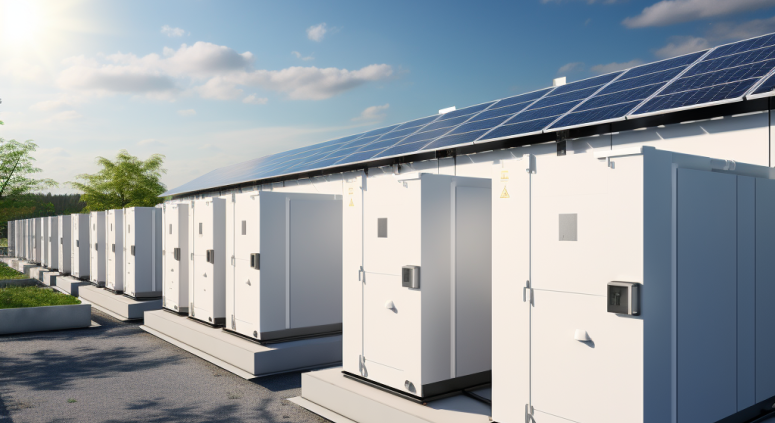Everything You Need to Know About Commercial Solar Energy Storage
Solar energy has become an increasingly popular choice for businesses looking to reduce their carbon footprint and lower their energy bills. However, one of the challenges with solar power is its intermittency – the sun isn’t always shining, and energy needs fluctuate throughout the day. This is where commercial solar energy storage comes into play.
Importance of Energy Storage in Commercial Solar Setups
In traditional solar energy systems, excess energy generated during peak sunlight hours is often fed back into the grid or wasted if not immediately consumed. Commercial solar energy storage allows businesses to store this excess energy for later use, providing a reliable source of power even when the sun isn’t shining.
Benefits of Commercial Solar Energy Storage
Cost Savings
By storing excess solar energy and using it during times of high demand or when electricity rates are higher, businesses can significantly reduce their energy bills. Additionally, some regions offer incentives or rebates for businesses that invest in solar energy storage systems, further enhancing cost savings.
Energy Independence
With a solar energy storage system in place, businesses can reduce their reliance on the grid and protect themselves from power outages or fluctuations in energy prices. This increased energy independence provides peace of mind and greater control over energy usage.
Environmental Sustainability
Utilizing solar energy reduces greenhouse gas emissions and reliance on fossil fuels, contributing to a cleaner and more sustainable environment. By incorporating energy storage into their solar setups, businesses can further enhance their environmental impact by maximizing the use of renewable energy.
Types of Commercial Solar Energy Storage Systems
There are several types of energy storage systems that businesses can use in conjunction with their solar installations:
Battery Storage Systems
Battery storage systems, such as lithium-ion batteries, are the most common type of commercial solar energy storage. These batteries store excess energy generated by solar panels for later use, providing a reliable source of power when sunlight is limited.
Thermal Energy Storage
Thermal energy storage systems use heat to store and release energy. These systems are often used in conjunction with concentrated solar power (CSP) plants, where excess heat generated by solar collectors is stored in molten salt or other materials and used to generate electricity when needed.
Pumped Hydro Storage
Pumped hydro storage systems store energy by pumping water uphill to a reservoir during periods of low demand or excess generation. When energy is needed, the water is released downhill through turbines to generate electricity.
Factors to Consider When Choosing a Solar Energy Storage System
When selecting a solar energy storage system for commercial use, businesses should consider several factors:
Capacity and Scalability
The capacity of the storage system should align with the business’s energy needs, and the system should be scalable to accommodate future growth or changes in energy demand.
Efficiency and Performance
The efficiency of the storage system, including charging and discharging rates, as well as overall performance and reliability, are crucial considerations for businesses looking to maximize the value of their investment.
Cost-Effectiveness
While upfront costs are a consideration, businesses should also evaluate the long-term cost-effectiveness of the storage system, taking into account factors such as energy savings, incentives, and maintenance costs.
Installation and Maintenance of Commercial Solar Energy Storage Systems
Implementing a commercial solar energy storage system involves several steps:
Planning and Design
The first step is to assess the business’s energy needs, site characteristics, and regulatory requirements to determine the optimal size and configuration of the storage system.
Installation Process
Once the system design is finalized, the installation process begins, including the installation of solar panels, inverters, and battery storage components. Depending on the complexity of the system, installation may require coordination with local authorities and utility providers.
Maintenance Requirements
Regular maintenance is essential to ensure the continued performance and longevity of the solar energy storage system. This may include routine inspections, testing, and occasional component replacements.
Regulatory and Incentive Considerations
Before investing in a solar energy storage system, businesses should be aware of relevant regulations and incentives:
Government Regulations
Regulations governing the installation and operation of solar energy storage systems vary by location and may include permitting requirements, interconnection standards, and safety regulations.
Tax Incentives and Rebates
Many governments offer tax incentives, rebates, or other financial incentives to businesses that invest in renewable energy technologies such as solar energy storage.
Financing Options
Businesses may have access to various financing options, including loans, leases, or power purchase agreements (PPAs), to help offset the upfront costs of installing a solar energy storage system.
Challenges and Limitations
While commercial solar energy storage offers numerous benefits, there are also challenges and limitations to consider:
Initial Costs
The upfront costs of purchasing and installing a solar energy storage system can be significant, although declining prices and available incentives are making these systems more accessible to businesses.
Technological Limitations
Current energy storage technologies have limitations in terms of energy density, efficiency, and lifespan, although ongoing research and development efforts are addressing these challenges.
Regulatory Hurdles
Navigating regulatory requirements and obtaining permits for solar energy storage installations can be complex and time-consuming, requiring careful planning and coordination.


